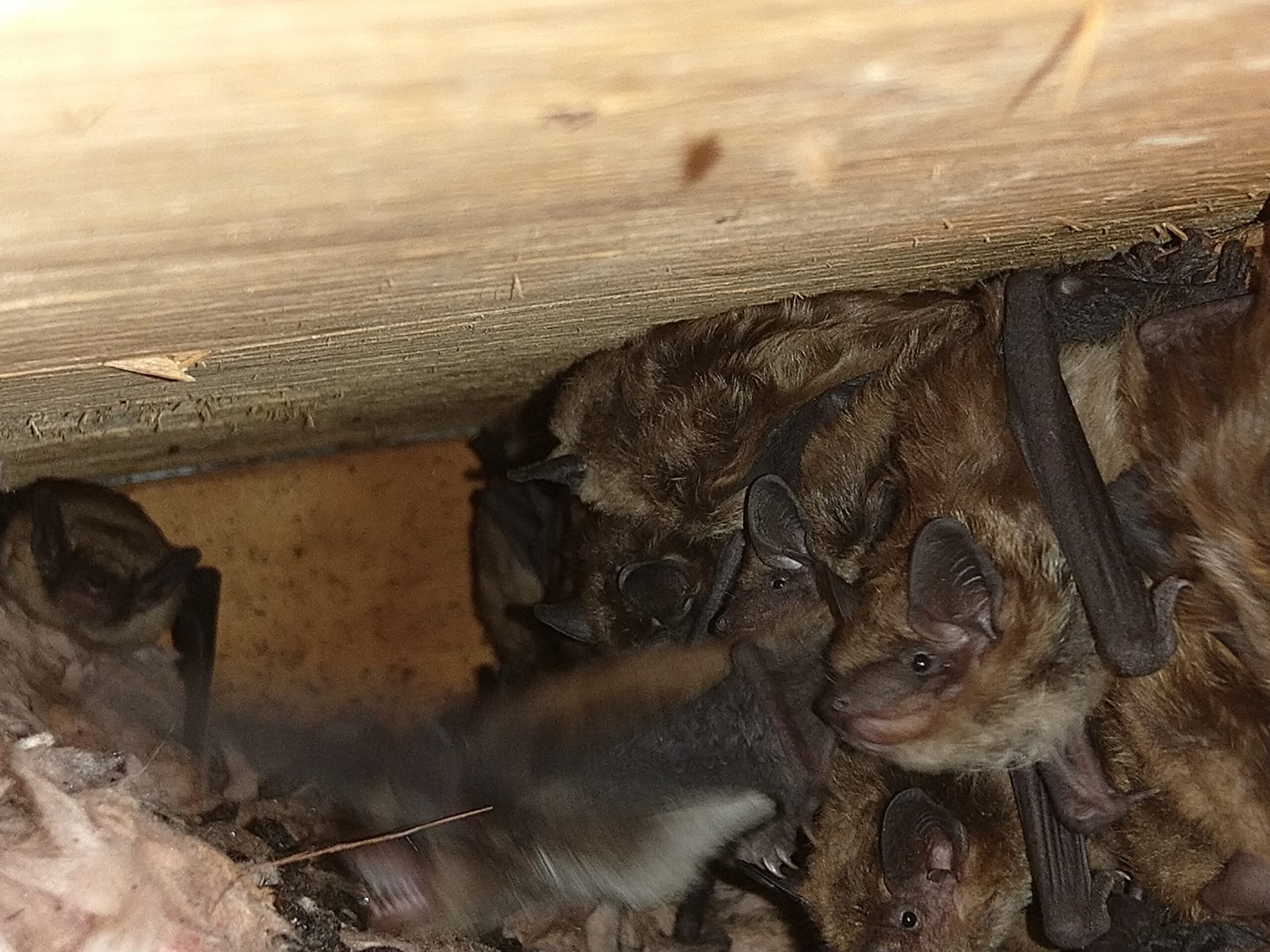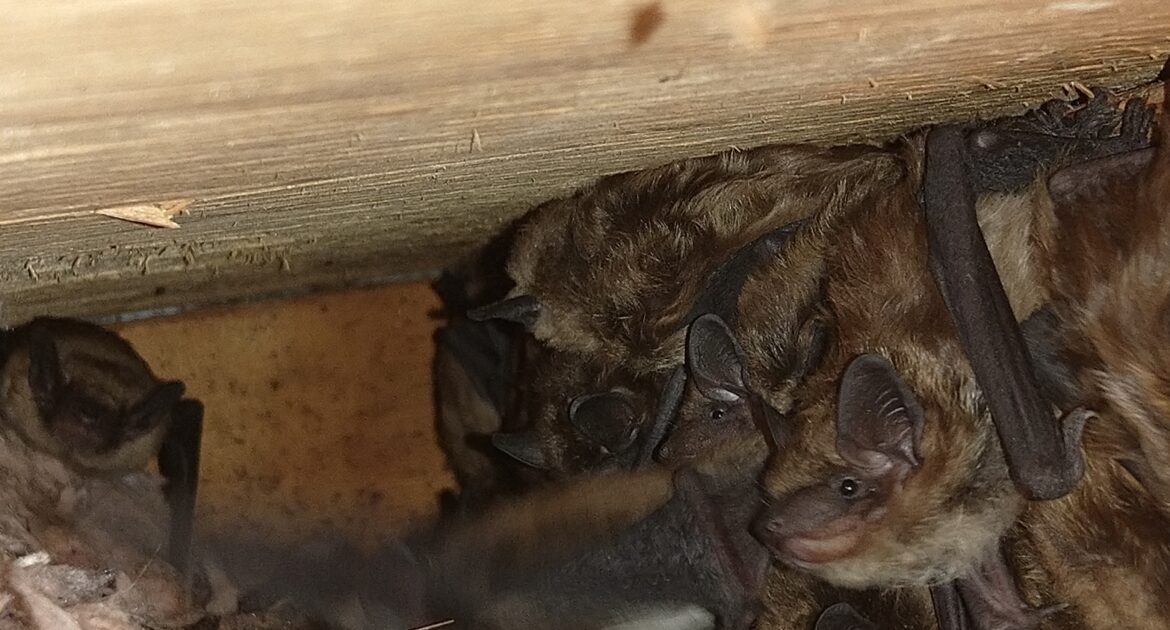Unwelcome guests disrupting your Oshawa home can come in many forms. Perhaps the most unexpected ones are bats. While they’re an essential part of the ecosystem, no homeowner wants to share their living space with them. If you’re searching for “how to get rid of bats“, you’ve come to the right place. In this engaging look at their unwanted household impacts, we’ll explain not only why it’s crucial to remove bats swiftly but also the significant risks they carry with them when they roost in your home.
The Dangers Bats Pose To Your Home
While bats play a critical role in our ecosystem, in your home they can present several dangers. Understanding these risks can help you take appropriate measures before the impact becomes a critical and costly issue.
- Structural Damage: Bats often make their homes – known as roosts – in the nooks and crannies of your house, such as attics, chimneys or wall cavities. Over time, these roosts can cause significant structural damage. Their weight causes structures to sag, while their droppings, or guano, are corrosive and can weaken wooden beams and destroy insulation.
- Cosmetic Damage: Apart from structural damage, bats can ruin the aesthetic appeal of your home, with guano and urine stains being particularly difficult to clean.
- Wire Damage: Bats can carry parasites such as ticks and mites that can cause damage to electrical wiring. This doesn’t just put you at risk of electrical faults but also poses a fire hazard.
- Health Hazards: They carry diseases that can pose a serious threat to your health and the health of your family. One of the most severe of these diseases is rabies, but bats can also carry histoplasmosis, a fungal infection that can lead to serious respiratory diseases.
Given these risks, it’s clear how crucial it is for homeowners to take immediate action at the first signs of bats in their homes. There are professional services, such as Skedaddle Humane Wildlife Control, that can help safely and humanely remove these unwelcome guests from your home.
Can They Compromise Your Family’s Health?
While most bats lead a peaceful existence and make an invaluable contribution to our ecosystem, it is important to understand that their presence in homes can pose significant health risks to humans. In the following paragraphs, we will provide a comprehensive breakdown of these infestation health risks and offer insights on how to address and prevent them effectively.
Risk of Rabies
One major health risk is the spread of rabies. According to the Centers for Disease Control and Prevention (CDC), bats are amongst the most frequently identified animals with rabies in North America. While rare, transmission to humans typically occurs through bites or scratches, which provide direct access to a person’s bloodstream.
Histoplasmosis Dangers
Bat guano, or droppings, contain a fungus known as Histoplasma capsulatum. When disturbed, the fungal spores may become airborne and inhaled, potentially leading to Histoplasmosis. This infection, prevalent among inhabitants close to colonies, affects the lungs and can result in severe, often chronic, pulmonary disease.
Endangerment Due to Bat Bugs
Similar to bed bugs in both appearance and behaviour, bat bugs pose another health threat. These parasites reside in bat colonies and can migrate into homes, irritating occupants as they feed off human blood during the night. Immense distress and itchy reactions are common signs you’ve been bitten.
Allergic Reactions
Exposure to guano may also instigate allergic reactions or asthmatic symptoms in sensitive individuals. Common symptoms include coughing, wheezing, chest tightness, and shortness of breath. To ensure the safety of households, prompt animal removal is crucial.
Although it’s crucial to respect these often misunderstood animals, for health and safety reasons, bats don’t belong inside our homes. Should you find these animals or evidence of them in your house, it’s recommended to contact professional wildlife removal services immediately. We have the expertise to handle the situation humanely and safely, adhering to local wildlife guidelines and regulations.
Common Signs Of An Infestation
Recognizing the early signs of an infestation is crucial for safeguarding your home and maintaining good health. By identifying these key indicators, you can take proactive measures to address the issue before it becomes a significant problem. Protecting your living space from bat infestations not only ensures the structural integrity of your property but also promotes a safe and hygienic environment for you and your family. Stay vigilant and be on the lookout for the following signs:
- Noises: Bats are nocturnal animals. They tend to be active at night, which is when you might hear squeaking or scratching sounds coming from your walls, attic, or chimney.
- Signs of Guano: Droppings, known as guano, are often a clear sign of an infestation. You might notice these small, shiny and dark droppings around your home, particularly near entry points like windows or doors.
- Grease Marks: Bats have oily fur. When they squeeze into small areas, they can leave greasy marks or stains, which could be a sign of a problem.
- Structural Damage: Over time, they can cause physical damage to your home. This can include weakened structures due to guano accumulation or holes and marks from bats trying to access your home.
- Unusual Activity of Pets: If you observe your pets behaving strangely, especially around areas like the attic, this could point to a possible infestation.
Steps You Can Take To Prevent Future Infestations
To avoid future bat infestations in your home, there are several preventative measures you can take. The key is to make your abode less appealing to these nocturnal animals. Here is a list of steps you can follow to ensure an animal-free environment:
Seal Potential Entry Points
Bats are skilled at squeezing through small gaps and holes. Taking into account their size, a hole as small as half an inch could serve as an entry point. Inspect your house thoroughly, including the roof, vents and walls, and seal all potential entryways.
Install Bat Houses
By setting up a bat house away from your residence, you can provide these animals with a separate dwelling. Not only does this ensure their safety, but it also discourages them from making your home their nesting spot. It’s a win-win solution for both you and the animals!
Prune Tree Branches Near Your Home
If you have bats around your house, you may find that tree branches close to your dwelling serve as a convenient runway for them. To prevent them from easily accessing your building, a recommended approach would be to trim these branches to a reasonable distance. By doing so, you can create an effective deterrent and minimize the chances of them gaining entry into your home.
Use Bat Repellents
While not always effective, using bat repellents – such as sprays, sound devices, or visual deterrents – may be worth a try. However, keep in mind that these options should always be used as a supplement to the methods above and not as the primary way to ward off the animals.
Seal Up Your Home At The Right Time
This step is crucial. Sealing your home during maternity season may trap babies inside. They could then seek out new areas in your home, leading to more trouble. Hence, know the breeding season in your region and be sure to avoid sealing during this time.
Prevention is the best strategy when dealing with potential infestations, but if you’re already dealing with this predicament, reach out to professional wildlife removal services. Skedaddle Humane Wildlife Control is here to assist homeowners in keeping their homes safe from bat damage and potential health risks.
Safeguard Your Home With Humane Removal In Oshawa
Remember, bats pose real risks to your home and health — they’re challenges homeowners should not overlook. At Skedaddle Humane Wildlife Control, we understand the unique problems these animals present. With our humane removal methods, we can help protect your home from infestation and associated health risks. Don’t jeopardize your home’s structural integrity or your health.
We’re here to assist you every step of the way, from evaluating the bat population to securing and sanitizing your home post-removal. Every ignored issue is a potential ticking time bomb for both your property and the health of your family. Act now to protect your living space, contact us today for professional animal removal services in Oshawa.




